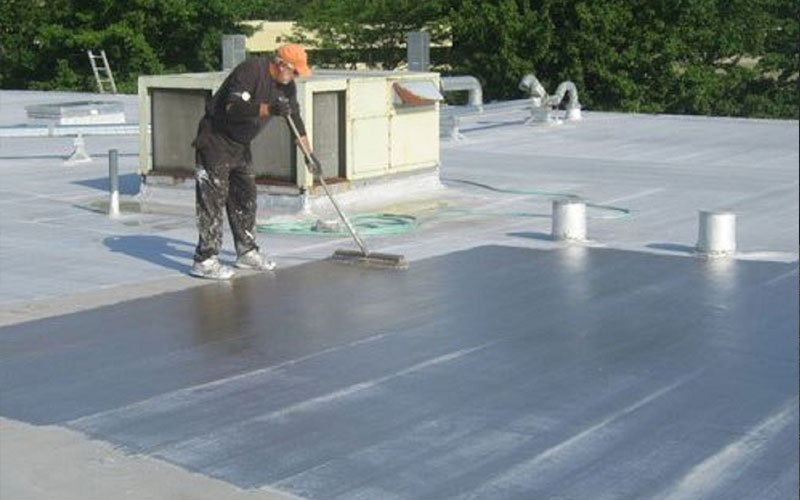Gloss shows how shiny a coated surface is and how it reflects waves from sunlight. A more reflective surface doesn’t just shine visible light, but also heat and UV light. This all prevents damage to the roof and lets it maintain its current properties longer.
Water resistance of a roof coating (water swell, wet adhesion etc)
Different coatings react differently to humidity and standing water on their surface, it’s important to know how well the material deflects moisture to prevent damage
- Water Swell: How much mass a material gains if left in water for an extended time. This can be very important for roof coatings after rainfall as they’re given a lot of time to absorb the moisture. This can cause the material to gain mass and weight itself down and compromise the material’s properties if it absorbs water too readily.
- Wet adhesion: How well a material sticks to its surface after being exposed to moisture. A coating may be good when dry but it can just as easily fall apart if it drastically weakens when exposed to water. For this reason it’s important to consider how well a coating will perform
What does aged data after QUV tell the consumer? Why is it important?
How are we implementing different QUV strategies to ensure consistent and comparable data?
- QUVs simulate intense weathering over several years in only a few hours. The coating is exposed to high heat, direct UV light, humidity, and water sprays repeatedly to simulate long term exposure to the elements. Many materials are shown to lose elongation overtime and become more tense, some will even lose gloss or yellow in color. It’s important to guarantee a product can resist these changes, staying strong and white over the years.
- We test all out products for tensile, elongation, color and gloss with both simulated and long term weather exposure. This ensures the quality of our products even after years of heavy weathering both in the worst of cases and a practical example simply outside our front doors.
What are some new test methods that are used in our lab? (i.e. the low spot testing in the pans)
One of our new test methods observes how a material reacts when a small dip forms in the surface, trapping water for long periods of time. Unlike our wet adhesion tests, which simply measure the materials adherence to a surface when exposed to standing water, our Low Spot test observes changes as the material is left under the water in intense temperature changes. The temperature changes along with water can damage a roof’s integrity or leave unsightly color stains, requiring a recoat or further repairs to the roof.

